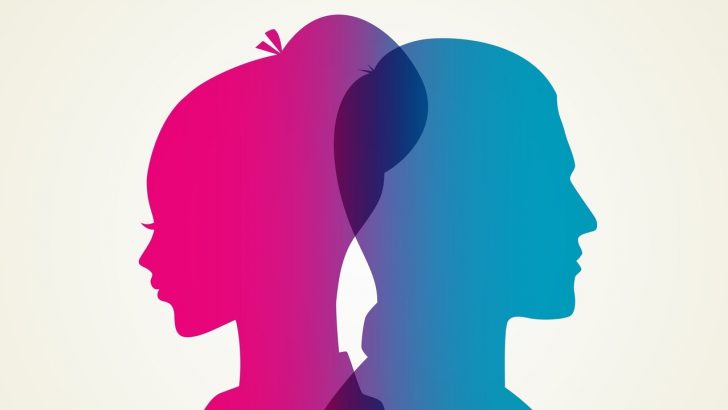Mags Gargan examines the complex relationship between faith and gender
New research shows that globally women, especially among Christians, are generally more religiously devout than men. These findings will come as no real surprise to anyone who has looked across the pews during Mass on any given Sunday in Ireland and seen the obvious gender gap. However, the new numbers illustrate interesting differences and reveal perhaps a more complex relationship between religion and gender than has been commonly thought.
The Pew Research Centre has amassed extensive data on gender and religion in six different faith groups (Christians, Muslims, Buddhists, Hindus, Jews and the religiously unaffiliated) across scores of countries, including many with non-Christian majorities. Data on affiliation in 192 countries was collected from censuses, demographic surveys and general population surveys.
The study finds that while women generally are more religious, men display higher levels of religious commitment in some countries and religious groups. And in other contexts, there are few, if any, discernible gender differences in religion.
The research looks at a variety of measures of commitment, including religious affiliation, frequency of worship service attendance, frequency of prayer and whether religion plays an important role in a person’s life. Throughout all these measures of religious commitment, Christian women are shown to be more religious than Christian men, often by considerable margins.
Atheists
In terms of affiliation 83.4% of women around the world identify with a faith group, compared with 79.9% of men – a difference of about 97 million people. There are no countries in which men are more religiously affiliated than women by two percentage points or more. In addition, researchers found that men are more likely to be atheists than women.
Among Christians in many countries, women report higher rates of weekly church attendance than men. In South Africa, Italy and Colombia, the share of women attending services at least once a week exceeds the share of men by 20%. But among Muslims and Orthodox Jews, men are more likely than women to say they regularly attend services at a mosque or synagogue, and this is due in large part to religious norms that prioritise men’s participation in worship services.
The biggest average gender gap found in this study is the difference between women and men who say they pray on a daily basis.
Across the 84 countries examined, the average share of women who say they pray daily is 8% higher than the average share of men. In Greece, the margin is as wide as 25%, in Italy 20%.
Even religiously unaffiliated women in some countries, including the US and Uruguay, report praying daily at higher rates than unaffiliated men do.
Very important
When asked if religion is “very important”, “somewhat important”, “not too important” or “not at all important” in 36 of the 84 countries women are more likely than men to regard religion as very important – often by notably large margins, for example in Lithuania (20%) and Poland (19%). Only in Israel and Mozambique are men more likely than women to consider religion very important to them personally.
When questioned about their thoughts on Heaven, Hell and angels, men and women usually display similar levels of belief. Out of 63 countries, both genders are equally likely to believe in Heaven in 47 countries and to believe in Hell in 52 countries. But where there is a discernible gender gap, women are more likely than men to believe in these concepts.
For example, women are more likely than men to say they believe in Heaven in 15 countries, including Russia and Uruguay, and more likely than men to say they believe in Hell in 10 countries.
There is no agreement on exactly why there is a gender gap in religious commitment. One explanation that is commonly offered for the larger number of women involved in Church life in Ireland is age. A disproportionate number of massgoers here are elderly, and since there are more elderly women than men in the population at large, we would expect more of them in church.
Other theories suggest it is to do with male power and privilege, and that women are more likely to be poor or have a lower social status and turn to the consolation of religion. Or it could be the greater role of women in family life and a lesser participation in the work force, or a biological tendency to being more open to the spiritual or it could be genetic, neurological, physiological, or hormonal differences.
Pew’s research does suggest that social and cultural factors, such as religious traditions and workforce participation, play an important role in shaping the religious gender gap.
The study shows that when women work outside the home, their levels of religious commitment fall to similar levels as men.
Labour force
Women working in the labour force are more likely than men to pray daily by an average of 7%, whereas women not in the labour force are more likely than men to pray daily by an average of 13%.
In many countries with large Christian populations, such as Italy, Greece, Chile, Mexico and the US women working in the labour force are much less religious than women outside the labour force and are more similar to men.
The pattern is different, however, in sub-Saharan Africa, where in countries such as Kenya and Ethiopia, women and men tend to show similarly high levels of religious commitment, regardless of women’s work status.
Ultimately there is no one factor that can be pinpointed to explain why women are more religious than men; it is generally a combination of a number of issues. But it is interesting to consider that in a religious denomination such as the Catholic Church where only men can be ordained, that it is women who make up the majority of the People of God.
*The full Pew report is available at http://www.pewforum.org/2016/03/22/the-gender-gap-in-religion-around-the-world


 Mags Gargan
Mags Gargan